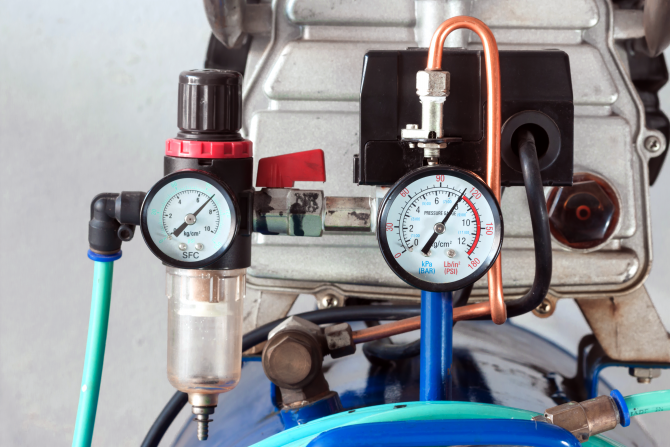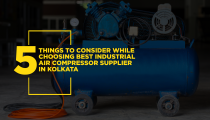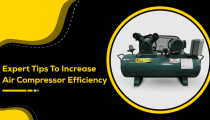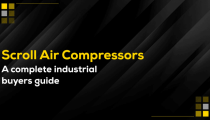Air compressor is multipurpose equipment specially designed to power pneumatic…

Reasons why pressure regulation is important for compressed air systems
There are a number of factors including pressure regulation that ensure compressors’ efficiency. Factors like capacity and power of a compressed air system have major impact on the production volume, if pressure is controlled properly. So, it is important to understand the pressure requirements of the facility, process & application and to design compressed air systems accordingly. In case a compressor system is designed for a much higher or lower pressure than required, it becomes the central cause behind increased operating costs. In situations like these, manufacturers do not have another option left but to invest in further adaptation. They modify the system for a lower pressure or the exact pressure as required.
How does the pressure regulation system work?
This is one of the most simple control schemes. The controller sends a signal to the compressor’s central motor and it lets the system know the time of starting or stopping based on preset pressure points. These are most common and used for compressors having lower duty cycles around 25 HP.
Load & Unload:
As the motor is constantly running, load/unload control is a continuous process for controlling speed. This is no exception to use load unload for pressure regulation. When the demand for air is reached, the inlet valve will close without turning off the motor. This helps in recirculation of air inside the compressor and restricts compressed air from blowing out of the inlet. A compressor controller is designed to stop the unit whenever there is a need to reduce power consumption. It restarts automatically after the net pressure decreases. Expected unloading period might be too short sometimes. In that case, the unit never stops running, preventing too short standstill period.
Modulation:
Output of a compressor may differ to meet flow requirements with help of an inlet valve in a modulating inlet control. At first, a regulating valve maps the discharged pressure and carries proportional pressure forward to operate the inlet valve inside. Inlet valve starts closing on the rise of compressed air pressure or throttles preventing inlet air and decreasing pressure. As a result, it creates a vacuum on the side of the compressor. On the contrary, the outlet pressure remains constant.
Variable displacement:
A compressor’s output capacity fluctuates using capacity control valves, spiral, turn or poppet valves. The variable displacement scheme handles output pressure and controls power consumption of compressors, modifying the length of the compressor chamber.
Variable speed drive:
This is how a continuous flow regulation is managed. Using a special drive, Variable speed drive or VSD controls the speed of the motor keeping the delivery pressure constant. An inverter is attached for a soft start while the motor paces it up. The motor must be controlled by the demand of the air by adjusting the frequency or voltage. The pressure is controlled by the speed of the motor while taking out fluctuations from the system. A little help from the compressor controller is considered anticipating increase and decrease of system pressure. By eliminating the unloaded operation of the compressor, VSD regulation is helpful in keeping the entire operation cost efficient.
Benefits of pressure regulation:
It is evident that to avoid unnecessary spending and to maintain the quality of the compressed air system’s components, professional handling of air regulation is necessary. As a result, the machine delivers the required operating pressure value without causing any issues within the process.
Systems which are well-designed will deliver adequate pressure as required by the manufacturing process and can maintain the same throughout much fluctuation.
Adding appropriate pressure controls to the compressor system has multiple benefits which are as follows.
- Energy consumption and the cost can be reduced with proper pressure regulation in the system. Likewise, this will help to improve pressure control and operating efficiencies when multiple compressors are at work.
- Proper pressure regulation helps in protecting the process and end products from high pressure air. Otherwise, the chance of damaging downstream instruments, devices, valves and other pneumatic equipment becomes high.
- If pressure is regulated properly, the required value of the pressure is delivered to the application avoiding fluctuation issues, longer downtime or any malfunction due to low pressure delivery.
Pressure regulation – the key to seamless & efficient operation
In order to function properly without any interruption, an air compressor must have the required capacity and power as compared to the desired production requirements. Pressure regulation helps to meet all the criteria with the right assessment, application and monitoring. Following this process, issues with pressure drops can be eliminated which makes the business profitable keeping the downtime low.




